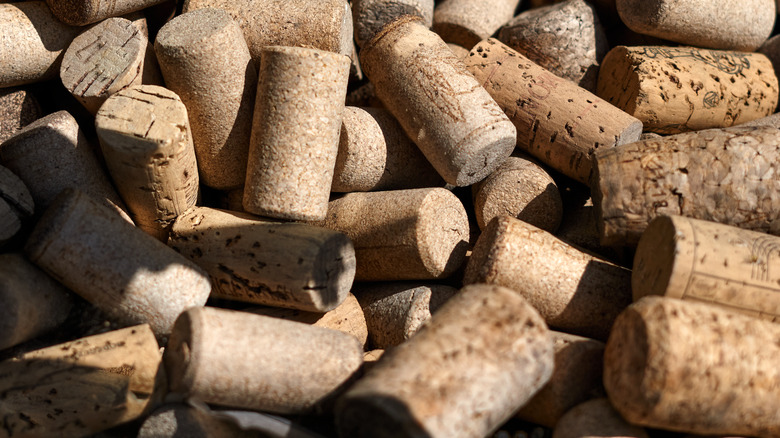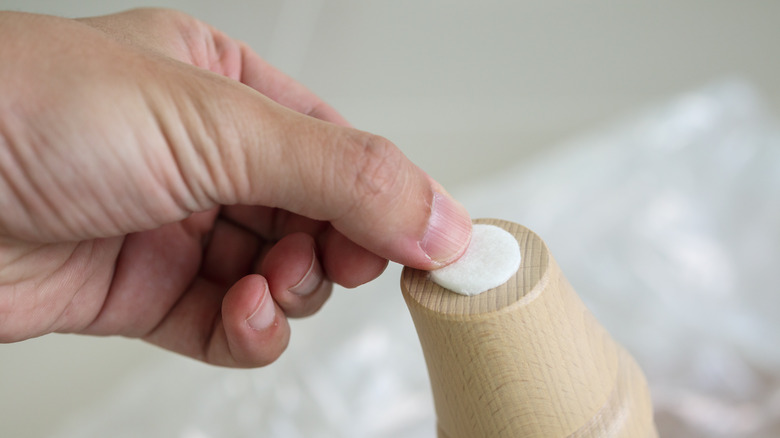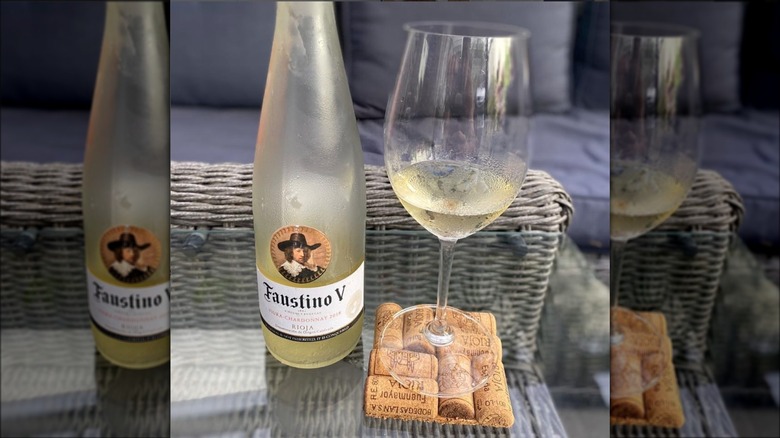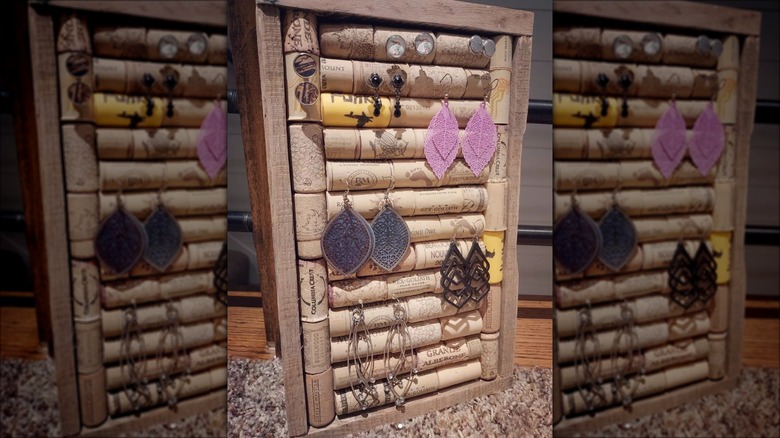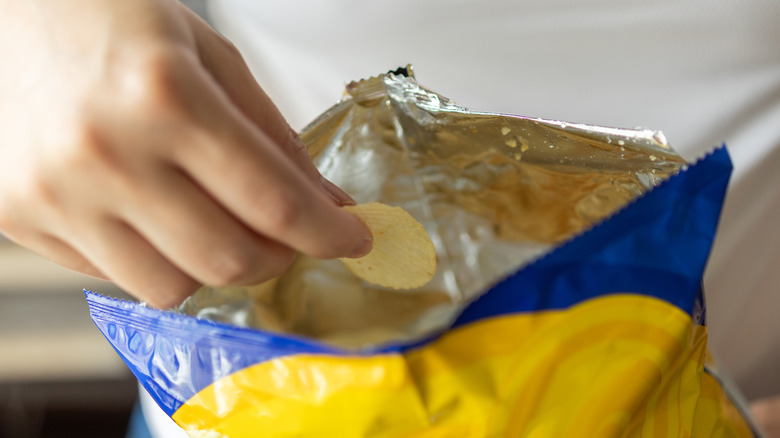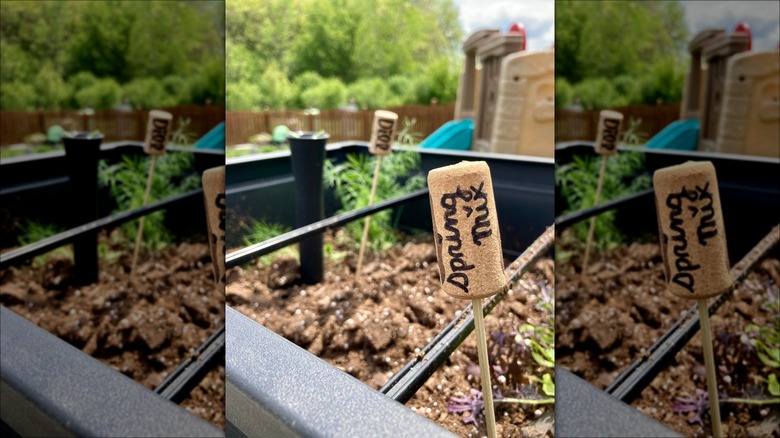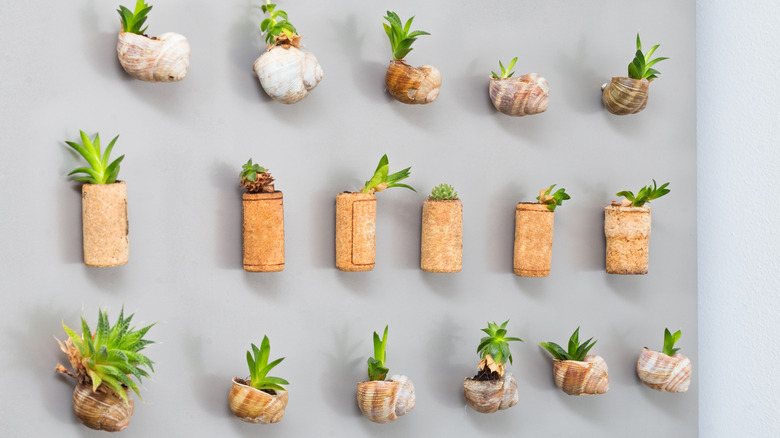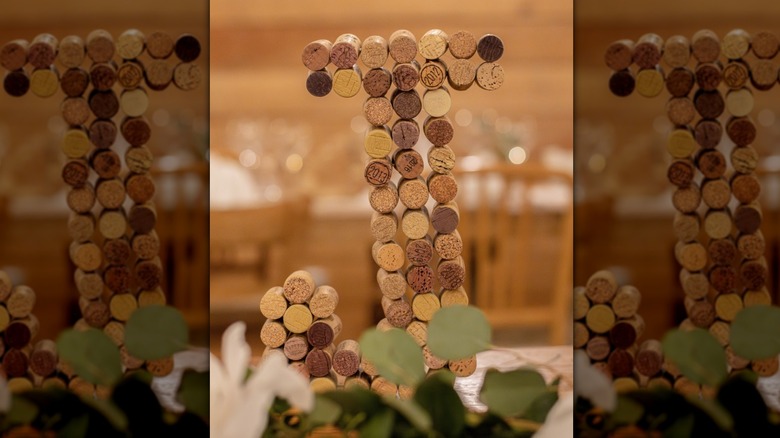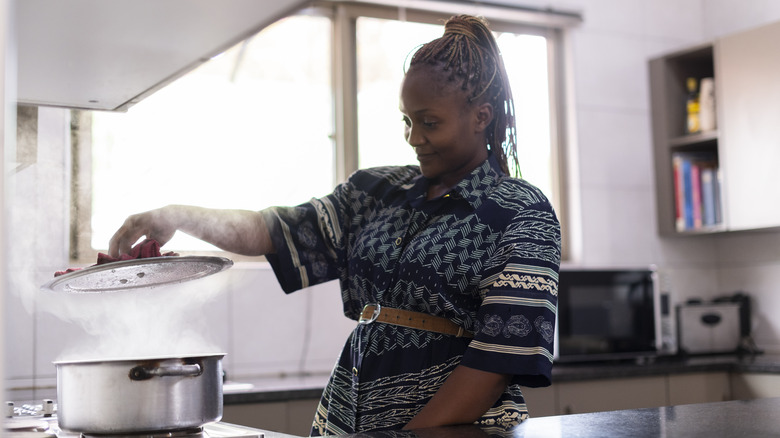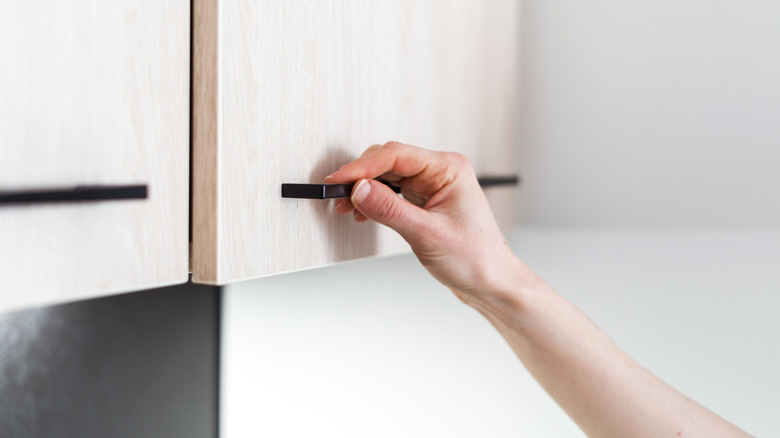All The Ways To Repurpose Wine Corks Around The House
If you enjoy relaxing with a glass of wine after a long day or frequently host dinner parties and holiday events at your house, empty bottles and corks can add up quickly. There are plenty of ways to upcycle empty wine bottles as décor, but repurposing the corks isn't quite as popular. However, with a bit of thought, you might just realize that the unique composition and small size of these stoppers makes them quite useful around the house and in the garden for both decorative and functional purposes.
Instead of simply sealing bottles off with a metal or plastic cap like most other kinds of beverages, winemakers use corks because of their ability to both close off the bottle and let a small amount of oxygen in. Many kinds of wine develop more complex flavor profiles as they age, but if a bottle is essentially vacuum sealed, no oxygen will get in and the flavor won't change. Corks are also not very dense, so they can float, and they're slightly squishy, so they can be squeezed back into places to create a tight seal. They're also even a bit foamy, meaning that they're able to absorb force and act as a cushion. Combine all of these characteristics, and you have an item that's uniquely suited to be repurposed for plenty of different DIY and upcycling projects around the house.
Reduce the wobble on furniture
Sometimes, our furniture is slightly unbalanced, causing it to have a slight wobble. Most of the time, this isn't a major issue, but that minor difference in the length of the legs of your chair or table can get annoying. To combat this, grab a cork and some glue. Cut the cork to create a sliver that's about the same size as the gap between the shorter leg and the floor. Glue it on, and you should notice that the wobble is significantly diminished. This small piece of cork can also help to protect your floors from scratching, just like other felt furniture pads.
Create your own coasters
It's not uncommon to find coasters made of cork, so, if you're feeling crafty, why not make your own? Simply glue a few corks together in a row to create a simple square design, or arrange them in a pattern for a bit more flair. The material will absorb drips from glasses to help protect your table. If you're not a fan of the textured surface the curves of the corks create, you can also opt to cut your corks in half so you're left with a flat side before gluing them together.
Use them to store jewelry
Cork boards are useful because they will securely hold onto small pins without being left with holes or losing their shape over time. Despite their cylindrical shape, regular corks from wine bottles have the same ability and are perfect for storing jewelry. Secure a few together using some glue, lay them out in an empty picture frame, or use them to fill up the bottom of a small box, then stick in the posts of your earrings — especially the small, easy-to-lose studs. This will keep them all organized and in one place, no expensive jewelry box necessary.
DIY your own firestarters
In many situations, all it takes to start a fire is a match and some dry sticks or paper. Sometimes, however, it presents a bit more of a struggle, whether it's because of unfavorable weather conditions or a less-than-ideal source of kindling. To combat this, it's a good idea to keep some firestarters on hand that will light easily and burn for an extended amount of time. There are plenty of ways to make your own, but one method involves submerging natural corks in rubbing alcohol. After a few days of soaking up this liquid, you'll be left with a ready-to-use and highly-flammable energy source.
Fashion simple chip clips
There's nothing worse than heading into the pantry for a snack only to discover that your opened bag has come undone and left you with stale, unpleasant chips. Obviously, investing in a few chip clips can help to solve this issue, but if you need something in a pinch, try grabbing a cork and a sharp knife or blade. Place the cork on its flat end, then cut a slit down the middle until you get about halfway through. Fold up the end of your chip bag, then slide the cork over the excess material using the slit you created to keep the bag securely closed.
Label the plants in your garden
Identifying where certain plants are in your garden, especially right after they've been planted, can be a struggle. However, with just some corks and skewers, you can create your own labels so you never lose track of your crops. Simply attach a skewer to the bottom of your cork, write the plant name on the cork with a marker or pen, and stick it in the soil. If it gets knocked over or blown away, you won't have to worry about accidentally polluting the soil with a non-biodegradable material, and it won't deteriorate with harsher weather or water like paper or cardboard would.
Make a tiny succulent magnet
You might be thinking that corks are too tiny to act as a pot for a plant, and, in most cases, you're correct. When it comes to small succulents and air plants, however, they're the perfect size. Use a drill to carve out the center of your cork until you're left with a hollow cup, then fill it with some soil meant for succulents, skipping this step for an air plant. Gently place in your plant, then use some glue to secure a small magnet to one side of the cork and stick it to your fridge or any other magnetic surface you have around.
Create custom wall décor
If you're looking for a way to display your corks rather than simply repurpose them — especially if you've been saving corks from special occasions like anniversaries or holidays — consider creating your own wall art. When glued together, corks can easily be shaped into monograms, numbers, or even more simple words. For example, you could create a sign out of corks that says "bar" to help decorate your bar cart, or make your initial to display in your home. There's also plenty of room to get creative with different cork colors, especially those that have been stained with red wine.
Protect your hand from hot lid handles
Most of us have learned by now that touching the side or bottom of a pot while cooking is a recipe for disaster, but it's easy to forget that you also need to protect yourself when lifting the lid. Sure, using a potholder can help to protect your hands, but if you're in need of a reminder that also allows you to painlessly check on your cooking, try wedging a sparkling wine cork under the handle. If it's properly situated, you can use your thumb and forefingers to lift the cork rather than using the handle, saving your fingers from the high temperatures.
Reduce the noise of slamming cabinets
When you're cooking in the kitchen or getting ready for the day in the bathroom, it's easy to accidentally slam cabinets and make a loud and unpleasant noise. Many cabinets come with small rubber pieces that help to muffle this impact and reduce the sound, but it's not uncommon for them to start to fall off or deteriorate. For a replacement, consider using wine corks. Cut a small sliver off and apply it to the inside of your cabinet door with a bit of glue. The foamy material will help to reduce the impact of the slamming cabinet door without looking too obvious.
